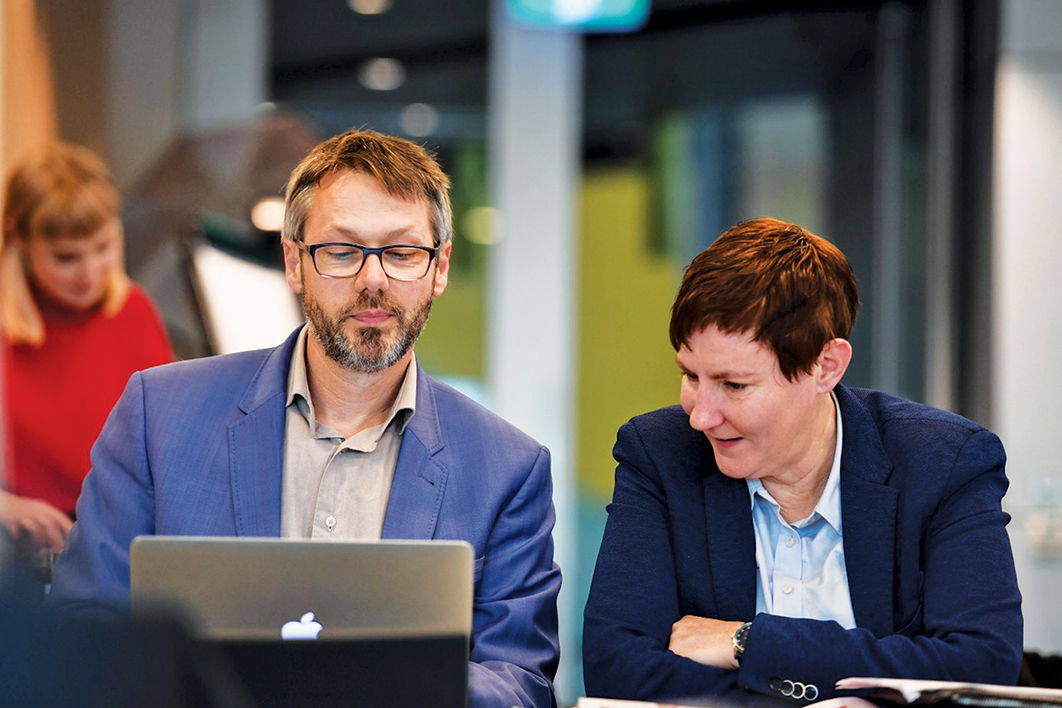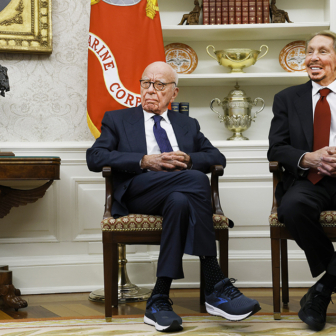Ten years ago this week a new, university-backed media organisation was founded in Melbourne. In a cheeky piece of boosterism to mark its anniversary, the Conversation is describing itself as “arguably Australia’s most successful global media business since News Corp.”
That’s more than a bit over the top, but the story of the Conversation is nevertheless significant in a time of fake news, public relations spin and hollowed-out mainstream newsrooms. Not least because its unique business model seems to be sustainable — something News Corp might envy as it watches the advertising revenue that has paid for most journalism continuing to ebb.
News Corp, indeed, has been happy to talk up the Conversation, though for entirely self-interested reasons. In evidence before the current Senate inquiry into media diversity, News executives pushed back against the view that their organisation is too dominant. We are in a sunlit upland of unprecedented diversity, they argued, thanks to independent online outlets such as the Conversation and, indeed, Inside Story.
The Conversation was founded by Andrew Jaspan, a British-Australian journalist who arrived in Melbourne in 2004 to become the editor-in-chief of the Age and Sunday Age. He had a chequered history, founding or editing leading newspapers but repeatedly falling out with his colleagues.
When he first began talking to universities about establishing a new media outlet, he was recovering from a bruising exit from the Age after a unanimous vote of no-confidence by the paper’s journalists. But even his fiercest critics concede that the Conversation was a stroke of brilliance. Only someone with Jaspan’s entrepreneurial and marketing skills could have got it off the ground.
The idea, he wrote in 2012, was a response to the newsroom cuts, the increase in public relations–driven media content and the spread of what we now call “fake news.” He had watched as the management of Fairfax slashed costs, and he had noticed that “among the first to leave were the specialist reporters with expertise in science, health, environment, business, politics, law and police rounds.”
Jaspan’s brilliance was to conceive of universities as a kind of “giant newsroom” full of expertise. His idea was to have journalists collaborate with academics to write content suitable for a broad audience, but with the academics remaining in control of the copy.
Fortunately for Jaspan, the then vice-chancellor of the University of Melbourne, Glyn Davis, came from a family of journalists and had a long history of supporting university participation in the media. As vice-chancellor of Griffith University he had overseen the establishment of the Griffith Review; at Melbourne he would establish the Centre for Advancing Journalism (where I was once director and now hold an honorary position). He found Jaspan a post at the university and helped him get the idea in front of other vice-chancellors, who were quick to understand and support the concept. They shared a “frustration with traditional media,” Davis says, and its failure to involve universities in the conversation.
By the time it launched, the Conversation had $10 million in funding — $3 million from a brace of universities, $3 million each from the Victorian and federal governments, and the rest from the Commonwealth Bank. Gradually, all Australian universities signed on. They remain members and owners of the not-for-profit corporate structure.
Jaspan’s entrepreneurial flair had not subsided. The Conversation spawned international editions, which now include Canada, Africa, France, Britain, the United States, Spain, Indonesia and New Zealand. But in April 2017 it all came close to crashing down. After months of tensions, Jaspan was forced out by the board.
He was a victim of his own success. The Australian staff had largely accommodated his idiosyncratic management style, but with the launch of the US and British editions, the Conversation had recruited senior journalists who pushed back, wanting more autonomy.
One industry insider quoted in Crikey neatly summed it up. “Andrew Jaspan invented one of the best global publishing ideas of a generation… then the staff said they couldn’t work with him anymore. It’s tragic that the only way the idea could keep going was by pushing out the founder.”
Davis says he has “very painful” memories of the decision. “Andrew vehemently denies the ‘founder’s syndrome,’ which is that the founder becomes an impediment to the next stage. He’s entitled to dispute that, but I have to say that there was a strong view amongst others that for the thing to prosper, it needed to move beyond its founders, which is not only Andrew but also me. Its subsequent success tells its own story.” Jaspan was the “brilliant entrepreneur” needed to get the project going, he adds, and “those who followed were more the media professionals who knew how to run a system and expand it.”
Jaspan moved on to a position at RMIT University, and then to Monash University, where he is now described as the director and editor of the Global Academy, which “aims to develop new forms and narratives for global journalism.”
Meanwhile, the work goes on. The Conversation’s Australian edition publishes about twenty articles a day on its own website, which are also available for other media organisations to use for free.
Typically, an article will be generated by an editor ringing an academic. The editor, Misha Ketchell, says the common view that academics can’t meet media deadlines and can’t write clearly is mostly untrue. Some write jargon and are precious about their prose, but most submit good drafts and “we sort out the rest through negotiation.”
The journalists’ key contribution, he says, is an awareness of the news cycle. “It’s us going to the researcher who is most relevant and saying this is in the news, and there is an opportunity for you to really do something that’s going to be very useful and there’s an audience that really wants access to this content.”
The ABC and the Guardian republish frequently, and most mainstream media use at least some of the content. News Corp, Ketchell admits, doesn’t use “as much content as we would probably like.” But not everyone in the media is a fan. Critics say the Conversation makes life harder for freelance journalists and small independent media. In theory, only academics are allowed to write for the Conversation, and they are not paid for their contributions. But there is fudging around the edges.
Veteran political correspondent Michelle Grattan is the most prominent example. She has an academic post as a professorial fellow at the University of Canberra, which makes her eligible to write for the Conversation, where she is described as the chief political correspondent. The copy she writes is similar to what she once delivered for the Age and the Sydney Morning Herald, with no clear academic research component.
Davis acknowledges that the most common complaint he hears in academia is that the Conversation isn’t academic enough. “Some people say it’s tried too hard for a broader audience, and so the level of the discussion is not always what you want it to be. Then people say that it’s mostly junior academics who write for it.” Davis thinks those criticisms should be taken seriously but “that doesn’t necessarily mean they are right.”
Ketchell, meanwhile, credits the Conversation with helping to combat misinformation during the pandemic. It supports journalism by providing free content that other media can run on their sites, he says, attracting audiences and therefore advertising dollars. “We also employ journalists,” he adds.
After the unpleasantness of Jaspan’s departure, the organisation resolved into a kind of international federation, the Melbourne mothership providing technological and back-end services in return for a small percentage of global revenue.
Each international edition has a slightly different business model. The Canadian, French and British editions run much like Australia’s, supported mostly by universities. The African edition has some university members but is mainly funded by philanthropists, which “changes the emphasis,” as Ketchell acknowledges. The US edition is a hybrid, with some university support but mainly philanthropic funding, and Indonesia is still seeking funding. New Zealand, likewise, is in development, supported by Melbourne.
As for the Australian edition, Ketchell says it costs about $5 million a year to run and employs about thirty staff, many of them part-time. About half its funding comes from the universities, with the rest from philanthropic foundations and about 20,000 individual reader-donors.
Last year the audience increased by 70 per cent, with one article on coronavirus by three ANU academics attracting 1.5 million readers. The most popular article ever published, in 2016, was “How Long Does Sex Normally Last?” by the University of Queensland’s Brendan Zietsch. (Answer: 5.4 minutes on average.) It got 8.5 million reads.
On Tuesday this week, the Conversation published a lead story from a Macquarie University historian on policies to combat misogyny, a couple of articles on the impact of climate change on the floods, and pieces on the Covid-19 vaccine rollout, the withdrawal of Covid payments and, deliciously, Voltaire’s Candide and what it tells us about human folly in times of crisis.
A survey of the media habits of 2000 Australians by the University of Canberra found that about 4 per cent access the Conversation each week — similar to the online audience for the Adelaide Advertiser, for example, and twice that of Crikey and the Saturday Paper. The audience leans hard to the left, with 65 per cent describing themselves as left-wing.
So is all this sustainable? Ketchell thinks so, though he acknowledges that Australian universities are increasingly cash-strapped. Davis agrees. Universities couldn’t achieve equivalent impact for their researchers any other way at the same cost, he says. All of which means the Conversation, like Rupert, is likely to remain a uniquely Australian contribution to the media ecosystem. •
The publication of this article was supported by a grant from the Judith Neilson Institute for Journalism and Ideas.





